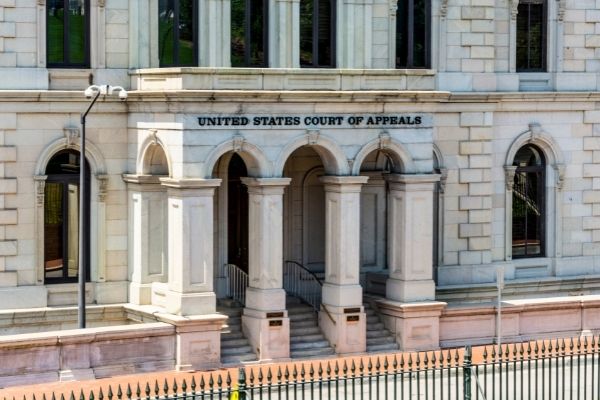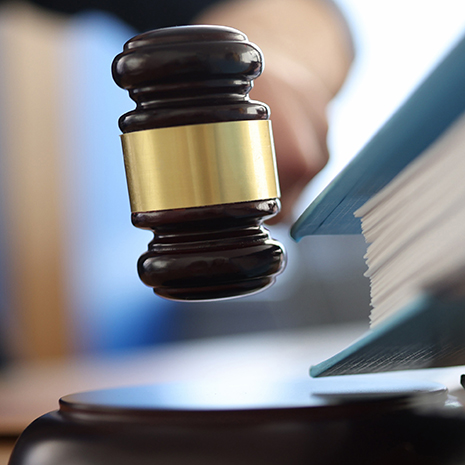Demystifying the Refine of Federal Appeals: What You Need to Know
Browsing the elaborate world of federal allures can typically seem like passing through uncharted waters for those unknown with the process. Comprehending the nuances of appellate court jurisdiction, the intricacies of filing a notification of appeal, offering a compelling short, and making a persuasive oral debate are important parts that can considerably influence the outcome of a situation. By unraveling the layers of complexity bordering federal charms, people can get a more clear understanding right into the mechanisms that govern this vital phase of the legal system.
Recognizing Federal Appeals Process
Exploring the detailed realm of the federal charms procedure unveils a systematic and organized journey with the judicial system - federal antitrust appeals. Federal appeals work as a vital system for reviewing decisions made by reduced courts. Understanding this process is crucial for anybody associated with legal procedures at the government level
The process typically starts with a celebration dissatisfied with a reduced court's ruling filing a notification of charm. This triggers a testimonial by a greater court, where a panel of judges analyzes the lawful arguments offered by both celebrations. Briefs outlining the lawful reasoning behind each celebration's placement are submitted, and oral debates might be heard to clear up complex concerns.
The appellate court's decision is based upon a detailed evaluation of the reduced court's procedures and the arguments offered. The courts do not concentrate however review facts on whether lawful errors took place that impacted the reduced court's decision. As soon as the appellate court reaches a choice, it can affirm, reverse, remand, or change the lower court's judgment, providing clearness and finality to the legal conflict. Recognizing this process is crucial for navigating the complexities of government appeals successfully.
Appellate Court Jurisdiction Discussed

Appellate courts have territory over specific types of instances, generally those entailing lawful errors, step-by-step concerns, or questions of legislation instead of valid disagreements. The territory of appellate courts is typically outlined in laws and legislations that govern the court system. Recognizing appellate court jurisdiction is important for events associated with the appeals process as it establishes whether a case is eligible for evaluation and the degree to which the appellate court can interfere in the reduced court's decision.
Filing a Notice of Charm
The preliminary action in starting the federal appeals procedure entails submitting a Notice of Appeal with the suitable appellate court. federal appeal lawyers hobbs act. This crucial file formally notifies the court and the other parties associated with the case that the appealing party intends to look for a testimonial of the reduced court's decision. Submitting a Notification of Appeal is a rigorous procedural requirement that establishes the appellate process in activity
When preparing the Notice of Appeal, it is necessary to guarantee conformity with the particular rules and standards of the relevant appellate court. The record should typically consist of information such as the situation name, the lower court's name, the date of the judgment being appealed, and a succinct declaration showing the premises for the allure.
When filing a Notification of Allure,Timeliness is of the essence. Missing out on the deadline for submitting this record can result in the allure being dismissed, highlighting the value of accurate and timely initiation of the allures process. It is a good idea to look for legal assistance to browse the complexities of submitting a Notification of Appeal efficiently.
Briefing and Oral Disagreement
In the appellate procedure, presenting composed briefs and involving in dental arguments play critical functions in supporting for the appealing party's position before the appellate court. Briefs are thorough legal records that outline the celebrations' disagreements, lawful authorities, and evaluation supporting their positions. These composed submissions supply the court with a thorough understanding of the federal antitrust appeals facts of the case, the appropriate regulation, and why the appealing event believes the lower court's choice ought to be overturned.
Following the submission and review of the briefs, oral arguments provide the celebrations a chance to additional clarify their settings, attend to any kind of inquiries the appellate courts might have, and emphasize crucial factors from their composed briefs. Oral disagreements are a chance for the lawyers to persuade the courts through spoken advocacy and feedbacks to inquiries from the bench.

Obtaining the Appellate Court Decision

Final Thought
Recognizing the appellate court jurisdiction, filing a notice of appeal, preparing briefs, and presenting oral arguments are all vital parts of this process. Inevitably, getting the appellate court decision can supply clearness and resolution to lawful disputes.
As we progress from comprehending the government charms procedure to studying the intricacies of appellate court territory, a fundamental aspect comes to light concerning the authority and limitations of these higher courts in the legal landscape. Appellate court territory refers to the extent of instances that a certain appellate court has the power to decide and review upon. Unlike trial courts that hear cases for the first time, appellate courts are limited to reviewing decisions made by lower courts. Understanding appellate court jurisdiction is crucial for parties involved in the appeals procedure as it establishes whether an instance is qualified for testimonial and the level to which the appellate court can intervene in the reduced court's choice.
Whether the appellate court verifies, reverses, or remands the lower court's decision, recognizing the effects of the judgment is vital for all celebrations included in the appellate process.
Comments on “Federal Crime Lawyer: Protecting Your Legal Rights Against Serious Federal Charges”